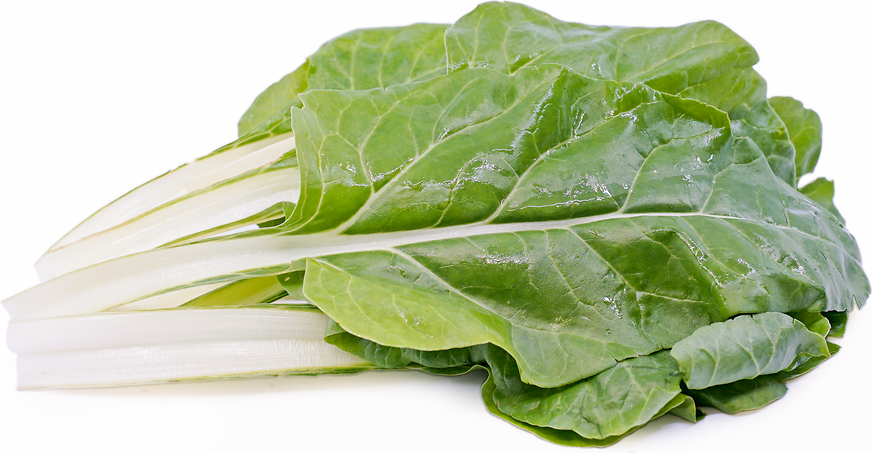


Argentata Swiss Chard
Estimated Inventory, bunch : 0
Description/Taste
Argentata chard grows to one meter tall when fully mature, but may be harvested young as a baby green for salads. It has distinct, dark green leaves that are gently creased, but far less wrinkled than other green Swiss chard varieties. Its whitish, silver mid-ribs are broad and less fibrous than most chards with a succulent texture. Its flavor is mild and sweet but can sometimes develop a unique salty character.
Seasons/Availability
Argentata chard is available year-round.
Current Facts
Argentata chard is an heirloom Swiss chard variety that is botanically classified as Beta vulgaris var. cicla. It is also known as Bionda á Costa in Italy where it is revered by chefs and gardeners alike for its superior flavor and buttery texture. Its large sturdy leaves are commonly braised and paired with spicy sausage.
Nutritional Value
Argentata chard is an excellent source of, potassium, iron, vitamin A and C, calcium, and fiber. Low in calories, one cup cooked chard contains about 35 calories.
Applications
Argentata chard can be used similarly to other green or colored varieties. It can be eaten raw when young, but larger leaves are best cooked. They can be sautéed, blanched, stewed, braised, baked, and even grilled. Use raw leaves to add an earthy saltiness in green salad mixes. Slow cook entire stalks similarly to collards and compliment with smoked meats and white beans. Wilt the shredded leaves into pastas or atop pizzas and flatbreads. The stalks are as equally edible as the leaves, and may be used in dishes for added texture. Complimentary flavors include citrus, tomatoes, garlic, shallots, chickpeas, white beans, potatoes, aged and melting cheeses, cream, mushrooms, bacon, sausage, ham, chili flakes, fennel and herbs such as basil, tarragon and chervil.
Ethnic/Cultural Info
Some chard varieties, such as Argentata, are actually ancient horticulture crops, with evidence dating back to the gardens of Rome and Greece.
Geography/History
As its genus, Beta vulgaris, suggests, chard is, in fact, a beet that has been chosen for leaf production at the expense of root formation. All chard varieties are descendents of the sea beet (B. maritima), a wild seashore plant found growing along the Mediterranean and Atlantic coasts of Europe and North Africa. Among all chard cultivars, Argentata is one of the most cold-hardy varieties. It is a prolific producer that adapts to most soil types and thrives in full to partial sun.
Recipe Ideas
Recipes that include Argentata Swiss Chard. One
| Giant Veggie Gardener |
|
Steamed Argentata Chard |




